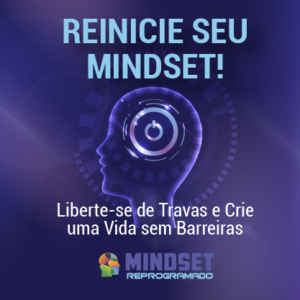Language metamodel: what it is and how to use it to improve communication

|
Getting your Trinity Audio player ready...
|
Have you ever felt like a conversation got out of hand because the other person misunderstood? Or have you ever found yourself stuck trying to express something that's crystal clear in your mind, but just doesn't come across as it should? The truth is, most of the time, the problem isn't the intention, but the language we use. And this is precisely where the language metamodel comes in.
Imagine you had a detailed map to decode what people really mean—including yourself. Such a map exists. It's called the language metamodel, one of the most fascinating and effective tools in Neuro-Linguistic Programming (NLP). With it, we can explore the hidden depths of speech, revealing the distortions, generalizations, and omissions that create noise in communication.
This article is a thorough and practical guide on how to apply the metamodel to transform the way you communicate—whether in relationships, negotiations, sales, leadership, or simply self-awareness.
NLP and the origin of the metamodel
Before we get into the details of the metamodel, it's important to understand where it comes from. The metamodel is part of the NLP — Neurolinguistic Programming, an approach created in the 1970s by Richard Bandler and John Grinder. The central idea of NLP It's simple, yet powerful: the language we use reflects and shapes our thoughts, and our thoughts shape our actions and results.
Thus, Bandler and Grinder studied the work of therapists such as Milton Erickson, Fritz Perls, and Virginia Satir, and realized they all had something in common: they knew how to ask questions that led the person they were talking to to rethink, reorganize, and reframe what they were feeling or thinking. Based on these observations, they created the metamodel of language.
This tool aims to identify linguistic patterns that distort reality and limit our thinking—and, more importantly, to break them through precise questions.
The mind filtering reality: the role of language
According to Bandler and Grinder's studies, everyone has their own “mental glasses” — a set of beliefs, experiences, emotions, and language that filters reality. And the most curious thing is that, even seeing the same world, two people can interpret it in completely opposite ways.
Above all, one of the main assumptions NLP works with the concept that “the map is not the territory”. In other words, the way we describe reality is not reality itself, but merely an internal representation. Furthermore, this representation is largely constructed through language.
Therefore, the language we use shapes our perception of reality. Thus, each word we choose carries with it an emotional charge and a series of associations that influence our understanding of the world around us.
In other words, when we use vague, absolute, or distorted words, we are actually reflecting how we interpret the world—and not necessarily how it is. In this sense, the metamodel helps us question these interpretations and construct more useful and true meanings.
Furthermore, the metamodel recognizes that language has inherent limitations. Thus, we cannot capture the full complexity of human experience in words, which inevitably leads to simplifications, generalizations, and distortions.
The Three Great Filters: Omissions, Distortions, and Generalizations
The language metamodel identifies three main types of filters in human communication: omissions, distortions, and generalizations.
Omissions: when we leave gaps
Have you ever heard someone say: “I'm frustrated”? And he wondered: frustrated with what? With whom? Why?
To the omissions happen when we fail to provide essential information for the communication to be fully understood. It's like trying to put together a puzzle with missing pieces. Example:
- Vague phrase: “He doesn’t respect me.”
- Metamodel question: “What specifically did he do that made you feel disrespected?”
This simple question opens space for clarity, reflection and reconnection with reality.
“Omissions (in some cases also described as “deletions”) occur when we leave out important information, leaving gaps in our communication.”
Distortions: Interpreting Without Evidence
Distortion occurs when we create meanings or draw conclusions without objective evidence. It's when we assume intentions, motives, or consequences without being certain. A classic example:
- Distorted sentence: “She’s mad at me.”
- Metamodel question: “How do you know she’s mad at you?”
This type of questioning makes the person step out of automatic mode and review their interpretations.
"Distortions refer to distorted interpretations of reality. This can happen when we attribute intentions to others without clear evidence or when we exaggerate situations, distorting the truth."
Generalizations: absolute truths based on clippings
Generalizations are dangerous filters because they transform isolated cases into universal truths. How many times have you heard (or said) phrases like:
- “Nobody listens to me.”
- “Every time I try, it fails.”
- “Everyone lies.”
By generalizing, we close doors to new possibilities and reinforce negative patterns. On the other hand, the metamodel steps in to break this linguistic prison:
- Metamodel questions: “Always? Wasn’t there a time you were listened to?” “Wasn’t there a time you tried and it worked?” “Do you know everyone in the world?” “Are you sure you’ve never met anyone who didn’t lie?”
These simple yet powerful questions challenge your thinking and restructure limiting beliefs.
“Generalizations are simplifications we make based on particular experiences, turning them into absolute truths.”
Complementary categories of the metamodel
Modal operators: “I must”, “I can” and “I can’t”
Modal operators are words that express necessity, possibility, or impossibility. Although they seem harmless, they profoundly influence how someone perceives what they can and cannot do.
Examples:
- "I I must do this” (need)
- "I I can try” (possibility)
- "I I am unable change” (impossibility)
Questions that challenge modal operators:
- “What would happen if you didn’t?”
- “Who says you can’t?”
- “What exactly is stopping you?”
In this way, this line of questioning breaks the rigidity of language and invites the person to reevaluate the limits they have imposed on themselves.
"Modal operators are words that express necessity, possibility, or impossibility. They function as filters that influence the way we interpret the world."
Necessity: the tyranny of “must”
Thus, necessity is a modal operator that indicates that something is mandatory or necessary. For example, “I must study for the exam.”
Excessive use of necessity can generate rigidity and frustration, as it puts us in a position of constant demand.
Possibility: opening doors to the new
On the other hand, possibility indicates that something is possible, but not necessarily certain. For example, “I can study for the exam.”
Thus, possibility allows us to explore different options and find creative solutions to problems.
Possibility and necessity: the dance of optionals
It is important to find a balance between necessity and possibility. By using both modal operators consciously, we can:
- Be more flexible: Adapt to different situations and find creative solutions.
- Avoid frustration: Reduce excessive demands and have more realistic expectations.
- Stay motivated: Stay focused on your goals, even when faced with challenges.
Mind Reading: The Danger of Guessing Thoughts
Mind reading occurs when a person acts as if they know what another person is thinking or feeling—without any confirmation. This pattern leads to hasty judgments and, often, unnecessary conflict.
Example:
- “He must think I’m incompetent.”
Metamodel question: “What exactly did he say or do that leads you to believe that?”
The idea is to help the person return to observable facts, not assumptions.
"Mind reading is the habit of assuming what others think or feel without real evidence. This can lead to misunderstandings and conflict."
Cause and effect: illusory relationships
The cause-and-effect pattern arises when someone assumes that one event automatically causes another. This isn't always true and can limit personal freedom.
Example:
- “She irritates me.”
- “If he keeps this up, I’m going to explode.”
Metamodel question: “How exactly does this person cause this feeling in you?”
In this way, this type of question returns emotional responsibility to the speaker — something powerful for self-knowledge.
"It is important to be careful when establishing cause-and-effect relationships between events. Just because one event precedes another, it is not always the cause of the second."
Hidden filters and assumptions
Many sentences conceal assumptions, that is, ideas accepted as truth without having been examined. Example:
- “Why do you always ignore me?” (assumption: the person in fact ignore)
Metamodel question: “Can you give me an example of when this happened?”
Uncovering these assumptions completely changes the direction of the dialogue.
"Mental filters are the criteria we use to select which information our brains will process. This can lead to a distorted view of reality."
How to apply the metamodel in practice
Identification of assumptions
One way to apply the language metamodel is to identify the underlying assumptions in a statement.
For example, if someone says: “I can never do anything right”, we can question what specific experiences led to this generalization.
So we can ask: “Never? Has there ever been a situation where you managed to do something right?”
Questions that reveal the inner world
Applying the metamodel is like operating a language scanner. So, when you hear someone using vague or absolute terms, ask:
- “Who, specifically?”
- “What exactly happened?”
- “Always? Never? In what situations?”
- “Are you sure or are you guessing?”
These questions are like flashlights that illuminate the speaker's inner world.
How to respond to vague, distorted, or generalized statements
Imagine someone saying: “Nothing goes right in my life.”
You may react with:
“Nothing? At no point in your life has anything gone right? Tell me about an exception.”
Another situation:
- “There’s no point in trying anymore.”
“How many different ways have you tried? What exactly didn’t work?”
By applying the metamodel, you're not being "annoying" or suspicious—you're helping the person reconnect with reality in a more accurate and empowering way.
Simulated dialogue with metamodel
Person A: “Nobody understands me.”
Person B: “Nobody? Not even your closest friends? Who specifically doesn’t understand you?”
Person A: “I think I’m exaggerating. It’s more at work, really…”
Person B: “What exactly happens in these situations?”
Person A: “They interrupt my ideas before I finish.”
See how, in just three questions, a generalization becomes a concrete fact that can be worked on.
Real benefits of the language metamodel
Clear and effective communication
When you master the metamodel, you begin to use language with more intention and clarity. Consequently, you reduce misunderstandings and improve assertiveness in any setting—from personal life to the corporate world.
Empathy and active listening
By asking questions that explore the other person's world, you demonstrate genuine interest, that is, empathyThis deepens connections, builds trust, and strengthens relationships.
Conflict reduction
Much of conflict stems from distorted interpretations or assumptions. Thus, the metamodel offers a bridge between differing perceptions, allowing dialogue to prevail over judgment.
Influence and leadership
Leaders who master the metamodel are more persuasive because they speak more precisely and listen more deeply. In this way, they inspire, guide, and transform realities with language.
Exercises to master the metamodel
Active observation
During informal conversations, observe:
- What words wander without explanation?
- Where are there exaggerations like “always” or “never”?
- Are there assumptions embedded in the sentences?
Reflective questioning practice
Try asking reflective questions to clarify vague statements or broad generalizations, helping to bring more clarity and precision to communication.
Dialogue simulations
Simulate dialogues using the language metamodel, practicing how to identify and correct distortions in communication.
Self-application
Reread messages or emails you wrote and ask:
- “Was I specific?”
- “Are there any generalizations?”
- “Did I make any unverified assumptions?”
The best way to teach is to live what you teach.
In short…
Mastering the language metamodel is like switching from an AM radio to stereo. Suddenly, communication stops being noise and becomes music. You begin to understand and be understood with greater precision, depth, and empathy.
Therefore, this NLP tool isn't just for therapists, coaches, or leaders—it's for anyone who values healthier relationships, more productive conversations, and a more conscious life. So, how about starting to use the metamodel today to communicate better?
Recommended Reading:
Reset Your Mindset: Break Free from Blockages and Create a Life Without Barriers
Frequently Asked Questions and Answers about the Metamodel
1. What is a metamodel in NLP?
The metamodel is a Neurolinguistic Programming tool used to identify and correct distortions, omissions and generalizations in language, promoting greater clarity and awareness in communication.
2. What are the main patterns of the metamodel?
The three main patterns are: omissions, distortions, and generalizations. They demonstrate how language can limit thinking and perception of reality.
3. How to apply the metamodel in everyday life?
You can apply the metamodel by asking specific questions that challenge vague or absolute statements. For example: "Always? Never? Can you give me a concrete example?"
4. Is the metamodel only for therapeutic communication?
No. It's useful in any context: work, relationships, sales, leadership, education—anywhere human communication exists.
5. What is the difference between metamodel and other language models in NLP?
The Metamodel focuses on increasing accuracy and clarity, while models like the Milton Model, for example, focus on creating hypnotic and indirect language. They are complementary opposites.
Image: Freepik
Article originally published on 04/02/2024 and updated on that date.

Marcel Castilho is an expert in neuromarketing, neuroscience, mindfulness and positive psychology. In addition to being an advertiser, he also has a Master's degree in NLP – Neurolinguistic Programming. As the owner and founder of the communications agency VeroCom and also of the digital agency Vero Contents, he has been studying human behavior for over 30 years.



